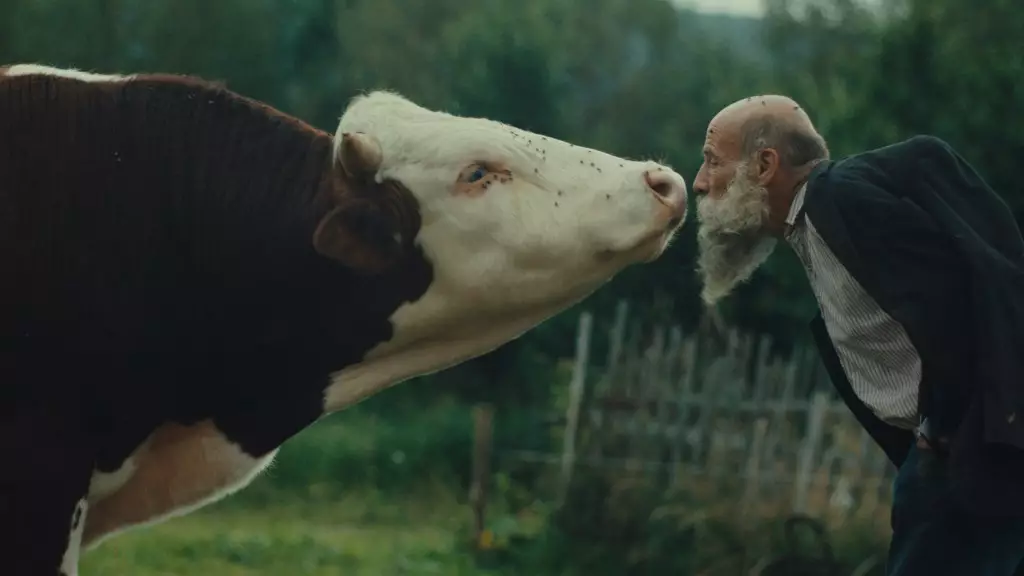In a world obsessed with the raw and the real, the recent documentary “Better Go Mad In The Wild” positions itself as an unvarnished gaze into the lives of two aging hermits living in the Bohemian Forest. While the film ostensibly seeks to challenge conventional judgments about poverty and eccentricity, it operates within a problematic paradigm: glorifying societal outcasts simply because they live outside mainstream norms. This romanticization, far from fostering genuine understanding, risks perpetuating stereotypes that frame rural disconnection as inherently noble or authentic. The film’s aesthetic choices—close-ups of dirt-streaked faces, candid nudity, drunken bickering—serve as superficial tokens of authenticity, but ultimately, they obscure the more complex societal forces that shape such lives.
What the film misses—and what viewers should critically interrogate—is whether this depiction adds meaningful insight or merely exoticizes the marginalized. By elevating these two brothers as symbols of uncorrupted simplicity, the narrative neglects to critically examine the structural reasons that led to their retreat from society: economic marginalization, political escapism, or perhaps a failure of the social safety net. Instead of engaging with systemic issues, it indulges in a voyeuristic tableau, reminding us that sometimes, the quest for authenticity is just another form of spectacle.
The Myth of the Noble Outlier
One of the more glaring issues with the film is how it elevates the brothers’ lifestyle as somehow inherently pure or enlightened. Their rebellion against societal expectations is painted with a nostalgic brush, echoing the romanticism often found in documentaries about rural or “authentic” living. Yet, this perspective dangerously simplifies complex realities. The brothers’ self-described independence—living off the land, rejecting modernity—may appear admirable on the surface, but it also hints at a deeper refusal to confront the socio-economic systems that could offer them better opportunities.
Furthermore, the film’s narrative is seemingly content to celebrate their autodidacticism and revolutionary past without probing its implications thoroughly. While it’s compelling to see former dissidents living out their days in humble seclusion, it’s equally essential to recognize that their choice to disengage from modern society might carry with it implications of neglect, social alienation, or long-standing trauma. The absence of such critical reflection reveals a subtle bias: that marginality, by default, is a form of resistance or authenticity worthy of admiration. But this kind of admiration can often overlook the ongoing struggles faced by those who lack access to education, healthcare, or social mobility.
Selective Narratives and Unmet Potential
The film’s narrative approach—minimal backstory, sparse exposition—leaves the viewer in a limbo of curiosity and frustration. This stylistic choice risks becoming an exercise in undue patience rather than meaningful engagement. The film hints at a profound history: participation in the Velvet Revolution, childhood educational failures, philosophical musings. Yet, these elements remain tantalizingly out of reach, undermining an opportunity to deepen understanding.
In this sense, the documentary wavers between the desire to showcase “real lives” and the temptation to leave much unexplored. It is as if the filmmakers are reluctant to fully explore the depth of their subjects’ experiences, perhaps out of concern that revealing too much might tarnish the picturesque veneer they’re aiming for. Consequently, the film becomes a digressive portrait of eccentricity rather than a compelling commentary on social or political realities. It celebrates the quirks and oddities but fails to leverage these stories to illuminate larger truths about society’s failures or the persistent inequalities faced by rural and impoverished populations.
More Than Just Eccentricity: The Politics of Compassionate Observation
From a center-leaning liberal perspective, the value of such documentaries lies in their potential to foster empathy, understanding, and ultimately, social change. However, “Better Go Mad In The Wild” walks a fine line. While it might seem to champion the dignity of those living on society’s fringes, it sometimes borders on benign voyeurism—exploiting eccentricity for entertainment rather than empowerment.
There is a danger in celebrating eccentricity without critically engaging with the systemic issues that contribute to such lifestyles. Is the film an act of genuine respect or a spectacle that reinforces stereotypes of the “noble savage”? It might appear that way when the narrative refrains from offering a clear-eyed analysis of how societal neglect, economic decline, and political upheaval shape these individuals’ lives. An honest liberal critique would push beyond surface-level marveling and advocate for policies that address the root causes of rural disconnection and poverty.
The film’s portrayal lacks a call for action; instead, it invites us to gaze in wonder at the oddities of the countryside while remaining content with surface-level understanding. True compassion should involve not only appreciating eccentric lifestyles but also recognizing the need for


Leave a Reply